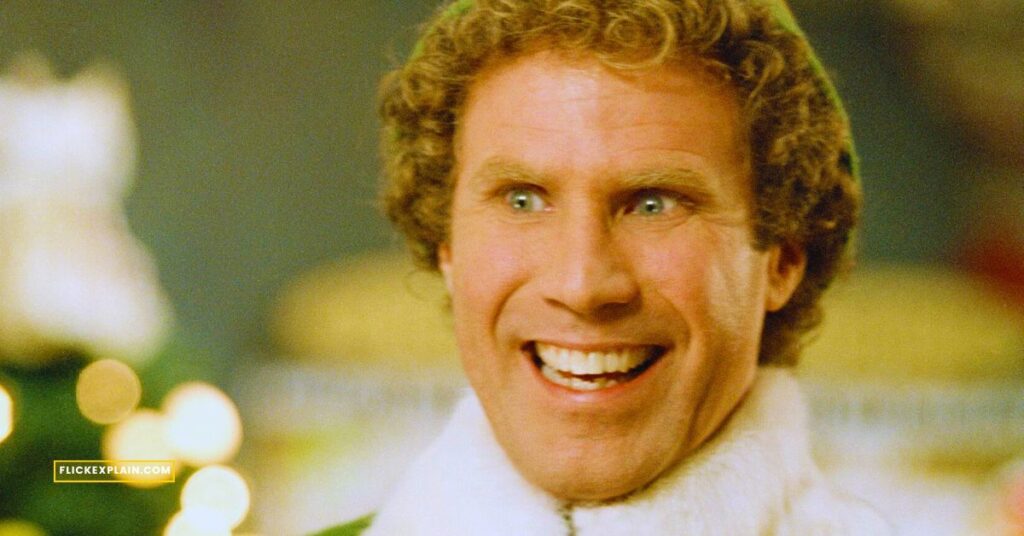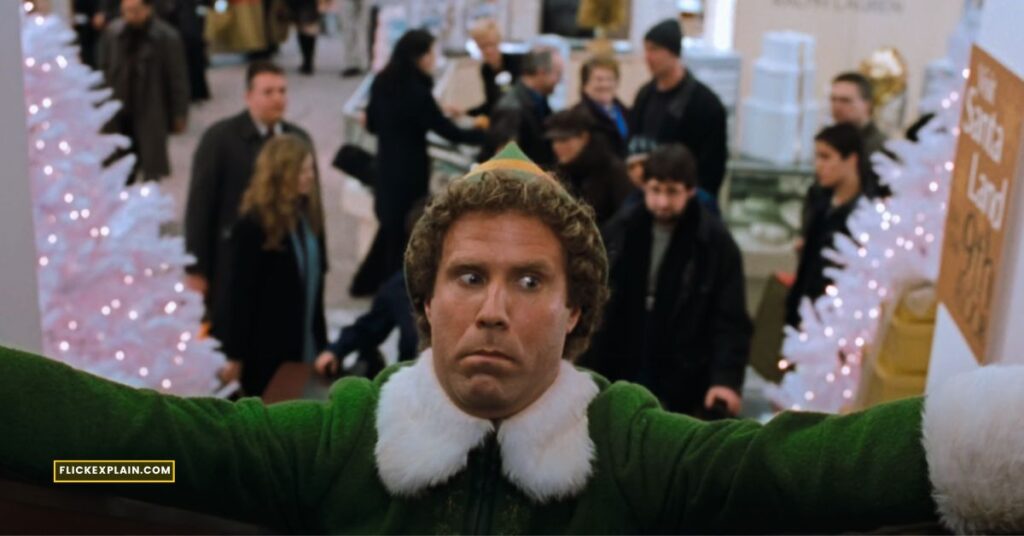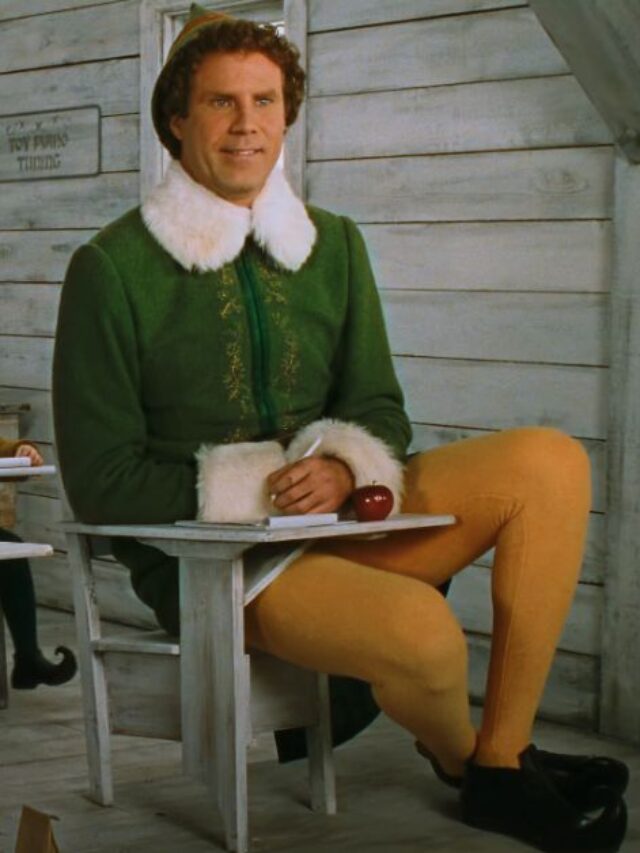Think you know everything about "Elf"? Well, I'm here to surprise you with some hidden gems from this Christmas classic.
I’ve always been fascinated by the stories behind movies, especially those that become a part of our holiday traditions. “Elf,” with its unique blend of humor and heart, is no exception.
In my deep dive into the world of Buddy the Elf, I discovered intriguing facts that even the most avid fans might not know. From casting choices that could have changed the entire film to behind-the-scenes secrets, “Elf” is a treasure trove of fascinating tidbits. My journey to uncover these facts was filled with surprises and revelations that made me appreciate this beloved film even more.
Join me as I share these lesser-known aspects of “Elf.” Whether you’re a die-hard fan or love a good holiday movie, these insights are sure to add an extra layer of magic to your next viewing. Let’s unwrap these hidden facts together!
1. Will Ferrell’s Perfect Casting

Will Ferrell’s Perfect Casting truly defines “Elf.” At first, Ferrell feared the role might tarnish his career. He worried about being typecast or the film failing. Yet, “Elf” became a defining moment for him.
In hindsight, Ferrell’s casting seems inevitable. His portrayal of Buddy is iconic, showcasing his comedic genius. Ferrell’s ability to embody Buddy’s childlike innocence and boundless enthusiasm is unmatched. His natural flair for physical comedy and timing brought Buddy to life.
Ferrell’s unique style was key. He blended a man’s physique with a child’s wonder brilliantly. This balance made Buddy relatable and lovable. Audiences across ages found joy in his performance.
Ultimately, “Elf” catapulted Ferrell to new heights. It solidified his status as a comedic powerhouse. His initial fears, though genuine, were unfounded. Ferrell’s perfect fit as Buddy is now a beloved part of Christmas movie history.
2. Influence of “Rudolph the Red-Nosed Reindeer”

“Elf’s” connection to “Rudolph the Red-Nosed Reindeer” is unmistakable. The film drew heavily from this classic. Similarities in characters and set design are evident. Santa’s workshop and the elf costumes in “Elf” mirror “Rudolph’s” iconic imagery. Even the stop-motion animals and the Snowman narrator reflect a clear nod to the beloved animation.
However, these parallels brought about legal worries. Lawyers initially raised copyright issues. They feared “Elf” borrowed too much from “Rudolph.” This concern almost led to significant changes in the film. There was talk of altering Buddy’s suit color and modifying set pieces.
Yet, a fortunate discovery eased these concerns. An error in “Rudolph’s” copyright date – “MCL XIV” instead of “MCM LXIV” – reduced the risk of a lawsuit. This legal loophole allowed “Elf” to retain its homage to “Rudolph” without fear of infringement. The influence of “Rudolph the Red-Nosed Reindeer” thus remained a defining element of “Elf,” adding to its charm and nostalgic appeal.
3. Jim Carrey: The Original Choice

Before Will Ferrell was even a consideration, Jim Carrey was the first choice for “Elf.” This was back in 1993, a time when Carrey’s career was rapidly ascending. Known for his dynamic facial expressions and energetic performances, Carrey seemed like an ideal fit for Buddy’s role.
The idea of Carrey as Buddy brings a different flavor to the character. His brand of comedy, marked by physicality and over-the-top expressions, could have given Buddy an extra edge. It’s intriguing to imagine how Carrey’s portrayal would have influenced the film’s tone and humor.
However, the project lingered in development for nearly a decade. By the time “Elf” was ready to move forward, Carrey’s career had taken different paths, and Will Ferrell emerged as a new comedic force. Ferrell’s casting ultimately shaped Buddy into the character we know and love today.
But the initial consideration of Jim Carrey for the role remains a fascinating “what if” in film history, highlighting the often unpredictable nature of casting in Hollywood.
4. Buddy’s Sugar-Fueled Behavior
Buddy’s behavior in “Elf” is largely driven by his excessive sugar intake, a hallmark of his elf-raised upbringing. This unique character trait brings a whimsical and humorous aspect to the film.
Buddy’s diet, heavily laden with candy, candy canes, candy corn, and syrup, doesn’t just make for comedic moments; it also explains his boundless energy and hyperactivity.
This overconsumption of sugar, while played for laughs, is a clever plot device. It highlights the stark contrast between Buddy’s elfin world and human society. His preference for sweets over traditional human food underscores his outsider status in New York City.
Moreover, this characteristic makes Buddy more endearing to the audience. His childlike joy in simple pleasures, like sugar, adds to his innocence and charm. It’s a subtle reminder of the joys of childhood and the magic of the holiday season.
Buddy’s sugar-fueled behavior is more than just a source of laughter; it’s a key element of his character development and the film’s overall appeal.
5. Authentic Reactions in the Film

The authenticity in “Elf” was notably heightened by unscripted surprises. A prime example is the Jack-in-the-Box scene. In this sequence, Buddy tests several toys, including unpredictable Jack-in-the-Boxes. What makes this scene particularly genuine is Will Ferrell’s real reactions.
Director Jon Favreau decided to remotely control the toys, setting them off at unexpected moments. Ferrell’s responses – his startled jumps and expressions of apprehension – were completely natural. This approach added a layer of realism to the character’s childlike innocence and unpredictability.
These authentic reactions contribute significantly to the film’s charm. They bring an element of spontaneity and genuineness that scripted scenes often lack. MIt’soments like these endear Buddy to the audience and make “Elf” not just a comedic film but a relatable and heartwarming story.
The decision to include these unscripted moments showcases the film’s commitment to capturing the genuine, human side of its fantastical story.
6. Early Career: Ferrell as Mall Santa

Before his rise to fame, Will Ferrell had a unique job that ironically foreshadowed his role in “Elf”: he worked as a mall Santa. During this early career phase, Ferrell was accompanied by fellow comedian Chris Katan. Together, they brought holiday cheer to shoppers, a gig that was both humble and amusing in retrospect.
This experience in an outdoor mall in Pasadena involved handing out candy canes and spreading festive joy. It wasn’t just a job for Ferrell; it was an early foray into performance and character portrayal. This stint as Santa allowed Ferrell to hone his skills in engaging with diverse audiences, especially children.
This early role is particularly noteworthy considering Ferrell’s future as Buddy the Elf. His time as a mall Santa might have subtly influenced his portrayal of Buddy. The part required a blend of humor, warmth, and interaction with the public – skills that Ferrell later showcased brilliantly in “Elf.”
Ferrell’s time as a mall Santa is a charming footnote in his career, highlighting a humble beginning before he became a well-known figure in comedy and entertainment.
7. New York City Filming Challenges
Filming “Elf” in New York City presented unique challenges, especially with scenes involving public interactions. The production team, led by Jon Favreau, capitalized on this by incorporating real-life reactions of New Yorkers into the film. This approach added an authentic layer to the movie, particularly in capturing the city’s vibrant and unpredictable atmosphere.
One memorable instance is Buddy’s walk through the Lincoln Tunnel, where his elf costume and naive demeanor elicited genuine surprise from everyday commuters. This not only heightened the film’s comedic element but also underscored Buddy’s out-of-place character in a bustling urban setting.
Another example is Buddy’s exploration of the city, which includes interactions with pedestrians. These scenes were largely unscripted, and Ferrell’s encounters with real people were filmed spontaneously. This method brought an element of realism to the movie, as viewers could see genuine reactions to Buddy’s odd behavior.
The decision to film in busy public spaces and use the city as a live backdrop was a bold move that paid off. It contributed to the film’s charm and helped establish “Elf” as a modern classic, resonating with audiences for its authentic portrayal of a fantastical character navigating the real world.
8. The Transformation of the Script
The transformation of “Elf’s” script from a darker, PG-13 concept to a delightful, family-friendly film is a pivotal chapter in its creation. Initially, the screenplay had a more adult tone, with elements that skewed towards a mature audience. This version of “Elf” was significantly different, featuring a less innocent Buddy and a storyline that didn’t shy away from darker themes.
Director Jon Favreau, however, recognized the potential to create a timeless Christmas classic and steered the script in a new direction. He envisioned a film that families could enjoy together, a movie that captured the essence of the holiday spirit. Favreau’s influence led to significant changes in the script, softening Buddy’s character and infusing the story with warmth and charm.
This shift in tone also involved altering certain plot points to make them more suitable for a wider audience. For example, the original ending involved magic dust to make the reindeer fly, rather than the power of the Christmas spirit, which was introduced in the revised version.
The decision to transform “Elf” into a family-friendly movie was crucial to its success. It allowed the film to appeal to both children and adults, offering humor and heart in equal measure. This change in the script’s direction is largely responsible for “Elf’s” enduring popularity as a holiday favorite.
9. Peter Billingsley’s Cameo
Peter Billingsley’s cameo in “Elf” as the elf Mingming is a delightful Easter egg for fans, and it’s rooted in his friendship with director Jon Favreau. Billingsley, best known for his iconic role as Ralphie in the Christmas classic “A Christmas Story,” brought a sense of nostalgia and holiday spirit to “Elf” with his brief appearance.
This cameo is a testament to the longstanding relationship between Billingsley and Favreau. Their friendship, extending beyond professional boundaries, facilitated Billingsley’s inclusion in the film. Favreau, recognizing the value of Billingsley’s association with beloved Christmas themes, smartly integrated him into “Elf.”
Billingsley’s role, although small, adds a layer of depth to the film’s Christmas lore. His portrayal of Mingming resonates with audiences familiar with his previous holiday role, creating a subtle but meaningful connection between two popular Christmas movies.
The inclusion of Billingsley is more than just a casting choice; it represents the collaborative spirit of the film industry, where personal connections often lead to memorable cinematic moments. His cameo in “Elf” is a delightful nod to his iconic role in holiday film history, enriching the film’s festive ambiance.
10. Director Favreau’s Vision

Director Jon Favreau’s vision for “Elf” was anchored in a commitment to timeless, practical effects over CGI. This decision was crucial in creating the film’s enduring charm and whimsical aesthetic. Favreau understood that while CGI can achieve spectacular results, there’s a unique magic in practical effects that resonates more deeply with audiences.
Favreau’s preference for practical effects was driven by a desire to give “Elf” a classic, ageless feel. He believed that relying too heavily on digital technology could date the film as technology evolved. Instead, he opted for techniques that would stand the test of time, ensuring “Elf” remained a perennial holiday favorite.
One of the most notable uses of practical effects in “Elf” is the forced perspective technique. This method was used to create the illusion of Buddy’s size in comparison to the elves and his surroundings. This technique, requiring careful camera placement and set design, added a layer of authenticity and charm to the film that CGI could not replicate.
Favreau’s emphasis on practical effects paid off, contributing significantly to the film’s appeal. It allowed “Elf” to capture a sense of nostalgia and fantasy that resonated with audiences. This approach showcased not only Favreau’s skill as a director but also his understanding of what makes a timeless holiday movie.
11. Use of Forced Perspective
The use of forced perspective in “Elf” is a masterful example of a cinematic technique that adds depth and wonder to the film’s visual storytelling. This technique, greatly inspired by its successful application in “The Lord of the Rings,” played a key role in achieving the whimsical atmosphere of “Elf.”
Forced perspective involves manipulating the viewer’s perception through camera angles and set design, creating an illusion of size and scale. In “Elf,” this was crucial for scenes where Buddy, a human raised among elves, interacted with his much smaller counterparts. By carefully arranging actors and objects in the frame, the film convincingly portrayed Buddy’s out-of-scale size without the use of CGI.
This method required meticulous planning and coordination. Actors and props were placed at specific distances from the camera to maintain the illusion. This approach not only added a layer of visual intrigue but also seamlessly integrated the fantasy elements of the story with the real world.
The decision to use forced perspective was a nod to the time-honored traditions of filmmaking. It showcased a preference for in-camera effects over digital post-production, contributing to the film’s overall charm and appeal. This choice underlined the creative ingenuity behind “Elf,” making it a standout example of the artistry possible in cinema.
12. James Caan’s Role as Walter

James Caan’s role as Walter in “Elf” served as a crucial counterbalance to Buddy’s whimsical eccentricities. Cast as Buddy’s biological father, Caan’s portrayal of a serious, no-nonsense businessman provided a stark contrast to Will Ferrell’s over-the-top, childlike enthusiasm. This dynamic was central to the film’s narrative and comedic tension.
Walter’s character, initially oblivious to Buddy’s existence, is steeped in the pragmatic world of New York City’s corporate culture. This grounding in reality made Buddy’s fantastical nature stand out even more. Caan’s performance, characterized by a certain gravitas and impatience, accentuated the absurdity of Buddy’s antics and the surreal situation of a grown man believing himself to be an elf.
The casting of Caan, known for his roles in more dramatic films, such as “The Godfather,” was a deliberate choice. It brought a level of seriousness that heightened the comedy. His reactions to Buddy’s naive and often inappropriate behavior offered some of the film’s most humorous moments.
In essence, Caan’s portrayal of Walter was integral in establishing “Elf’s” narrative arc. His initial skepticism and eventual acceptance of Buddy mirrored the audience’s journey from disbelief to embracing the joy and magic of the story. Caan’s role as the serious counterpart was key in balancing the film’s tone, making “Elf” a heartwarming and hilarious holiday classic.
13. Unique Filming Locations
“Elf’s” choice of unique filming locations significantly added to its distinctive visual and atmospheric quality. A notable example is the use of the Riverview Hospital, a decommissioned mental health facility in British Columbia, Canada, for various interior shots. This choice was far from conventional but proved to be a masterstroke in terms of production design.
Riverview Hospital, with its expansive and diverse architectural styles, offered a range of settings under one roof. This versatility was invaluable for creating the different interior environments needed for the film. The hospital’s corridors, rooms, and larger halls were transformed into various settings, including Walter’s apartment, the department store, and even the jail cell where Buddy finds himself.
The use of an old asylum added a layer of depth and texture to these scenes. The hospital’s aged and ornate interiors provided a stark contrast to the North Pole’s whimsical design, highlighting Buddy’s displacement in the human world. The inherent eeriness of the asylum was skillfully repurposed to enhance the film’s aesthetic, giving “Elf” a unique visual character that would have been hard to replicate in a studio.
Choosing Riverview Hospital as a filming location showcased the production team’s creativity and resourcefulness. This decision not only solved practical filming challenges but also contributed to the film’s distinctive charm and visual narrative.
14. “Lord of the Rings” Homage
In “Elf,” the Central Park Rangers, who pursue Buddy and Santa Claus, serve as a subtle homage to the Ringwraiths from “The Lord of the Rings.” This creative nod adds a layer of fantasy and drama to the film, bridging two very different cinematic worlds.
The Central Park Rangers are depicted as ominous and formidable, much like the Ringwraiths in J.R.R. Tolkien’s epic. Their portrayal in “Elf” is intentionally exaggerated, with their dark, menacing presence and relentless pursuit through the park. This allusion is not just a whimsical reference; it also amplifies the sense of urgency and peril in the film’s climax.
The decision to model the Central Park Rangers after the Ringwraiths reflects Jon Favreau’s appreciation for “The Lord of the Rings” and its cinematic representation. It’s an example of how “Elf” seamlessly weaves together elements of fantasy and reality, creating a rich tapestry that appeals to a wide range of audiences.
This homage is a testament to the versatility and depth of “Elf” as a film. It demonstrates how references to other works can enrich a movie, adding layers of meaning and enjoyment for viewers who recognize them. The Central Park Rangers, inspired by the Ringwraiths, are a perfect example of this, contributing to the film’s enduring charm and appeal.
15. The Prospect of “Elf 2”
The prospect of a sequel to “Elf,” tentatively titled “Elf 2,” has been a topic of much speculation and interest among fans. However, the possibility of this sequel taking shape was notably diminished when Will Ferrell, who played the beloved character Buddy, turned down a staggering $29 million offer to reprise his role.
Ferrell’s refusal to participate in “Elf 2” was a decision rooted in his commitment to the integrity of the original film. He expressed concerns that a sequel might not live up to the charm and warmth of “Elf” and that his reprisal of Buddy, especially as he aged, might come across as unconvincing or forced. Ferrell feared that an unsuccessful sequel could potentially tarnish the legacy of the original film, which had become a cherished holiday classic.
The decision to decline such a lucrative offer speaks to Ferrell’s dedication to his craft and his respect for the character and the film’s fans. It reflects an understanding that some stories, however popular, are best left untouched, preserved in their original form.
The prospect of “Elf 2” remains a tantalizing “what if” in cinema. Ferrell’s choice to prioritize the artistic integrity of “Elf” over a significant financial gain is a rare instance in Hollywood. It cements the film’s status as a standalone masterpiece in the realm of holiday movies.
Conclusion
The enduring appeal of “Elf” as a Christmas classic is undeniable. This film, through its unique blend of humor, heart, and whimsy, has etched itself into the holiday traditions of countless viewers around the world. Its lasting charm is a testament to the creative vision of Jon Favreau, the unforgettable performance by Will Ferrell, and the collective efforts of the entire cast and crew.
“Elf” transcends the typical boundaries of a seasonal movie, offering a story that resonates with audiences of all ages. Its impact is seen not just in its popularity during the holiday season but in how it has become a part of popular culture. The character of Buddy the Elf, with his innocence and unbridled joy, serves as a reminder of the wonder and excitement that the holiday season can bring.
The legacy of “Elf” is also found in its influence on filmmaking. It’s a prime example of how a film can successfully blend practical effects with a heartfelt story, proving that the true magic of cinema lies in its ability to connect with audiences on a personal level.
As years pass, “Elf” continues to be discovered and loved by new generations, ensuring its place as a perennial holiday favorite. Its blend of comedy, sentiment, and holiday spirit remains as engaging and endearing as it was upon its release. “Elf” is not just a movie; it has become a cherished part of holiday lore, a film that brings laughter and joy, reminding us of the importance of family, love, and the enduring power of believing in the magic of the season.
